Do you have a question about the Honda Marine BF2.3D and is the answer not in the manual?
Discusses safety importance, signal words like DANGER, WARNING, and CAUTION.
Details safety precautions and hazard prevention for the BF2.3D motor.
Precautions for safe refueling with flammable gasoline.
Explains the location and meaning of safety labels on the outboard motor.
Safety label information specific to Canadian models.
Explains model type codes used to identify control and feature applications.
Diagrams showing the location of all major controls and components.
Details the emergency stop switch system and its operation.
Explains the function and operation of the choke knob for starting.
Describes how the throttle grip controls engine speed.
Explains how to adjust throttle grip resistance for steady speed.
Details the operation of the fuel valve lever.
Instructions on operating the starter grip to crank the engine.
How to use the strap to secure the engine cover.
How to adjust the outboard motor's angle on the transom.
Operation of the tilt lever for positioning the motor.
Adjusting steering resistance for steady course holding.
How to use clamp screws to secure the outboard motor.
Operation of the fuel tank vent knob.
Overview of additional features.
Explains how the centrifugal clutch engages and disengages.
How to check the engine oil level using the inspection window.
The function of the anode in protecting the motor from corrosion.
Guidance on matching motor horsepower to boat capacity.
Proper placement and height for installing the outboard motor.
Steps for securely attaching the outboard motor to the boat transom.
Adjusting the motor's angle for optimal performance.
Pre-operation checks and knowledge required for safe boating.
Essential safety practices like wearing PFDs and using the kill switch.
A checklist for ensuring the outboard motor is ready for operation.
Key maintenance checks to perform before operating the motor.
Crucial safety checks to perform before each operation.
General safety guidelines for operating the outboard motor.
Proper procedure for breaking in the new outboard motor.
Adjusting the transom angle for optimal operating position.
Advice for using the outboard motor infrequently.
Step-by-step guide on how to start the outboard motor.
Procedure for starting the engine manually in an emergency.
Procedures for stopping the engine.
How to immediately stop the engine in an emergency situation.
Proper procedure for stopping the engine during normal use.
How to use the throttle grip and friction knob for speed control.
Important safety precautions and steps for operating in reverse.
How to steer the outboard motor using the tiller handle.
Tips for efficient engine speed and handling in different water conditions.
Adjusting the transom angle for stable cruising and maximum power.
Procedures for tilting the motor for docking, beaching, or launching.
Explains why proper maintenance is essential for performance and longevity.
Critical safety precautions to follow during maintenance tasks.
Lists and describes the tools supplied with the outboard motor.
A detailed schedule of required maintenance tasks and intervals.
Step-by-step guide for removing and installing the engine cover.
How to check the engine oil level correctly.
Detailed instructions for changing the engine oil.
Recommended types and viscosity of engine oil.
Instructions for changing the gear case oil.
Identifies specific points requiring lubrication and intervals.
Guide to inspecting, gapping, and replacing the spark plug.
Instructions and safety precautions for refueling the outboard motor.
Guidance on using the correct type of gasoline.
How to inspect the recoil starter rope for wear.
Procedure for replacing the sacrificial anode.
Steps for safely removing and installing the propeller.
Essential steps to prepare the motor for long-term storage.
How to clean the outboard motor after use, especially in salt water.
Information about fuel deterioration and storage.
How to use fuel stabilizer to prevent fuel issues during storage.
Procedure for draining fuel to prevent deterioration.
Engine oil procedures for storage preparation.
Guidelines for selecting a proper storage location and conditions.
Steps to take when removing the motor from storage.
How to transport the boat with the outboard motor attached.
Methods for transporting the outboard motor when removed from the boat.
Troubleshooting steps for when the engine fails to start.
Solutions for hard starting or stalling issues after the engine begins running.
Troubleshooting steps when the engine runs but does not drive the propeller.
Immediate actions and procedures if the outboard motor is submerged.
Where to find and record product and engine serial numbers.
How altitude affects engine performance and carburetor adjustments.
Information regarding the engine's emission control system.
Warnings against tampering with emission control systems.
Symptoms indicating potential issues with the emission control system.
Recommendations for using genuine replacement parts for emission systems.
Emphasizes following the maintenance schedule for optimal performance.
Explanation of the emission star labels and their meaning.
Details the meaning of different star ratings for cleaner marine engines.
Detailed technical specifications for the BF2.3D outboard motor.
Information on additional publications for maintenance and repair.
Details about the comprehensive shop manual for technicians.
Information on obtaining the illustrated parts catalog.
Information on available accessories for the outboard motor.
How and where to contact Honda customer service.
Specific contact details for Honda Marine customer relations.
An overview of the types of warranties provided for the outboard motor.
Procedures for obtaining warranty service and support.
Conditions and circumstances not covered by the product warranty.
Legal disclaimers regarding consequential damages and implied warranties.
Warranty terms for accessories and replacement parts.
Statement defining the scope and limitations of the written warranties.
Specific warranty coverage for the emission control system components.
The owner's responsibilities to maintain warranty validity.
Details of the warranty coverage duration and transferability.
Steps for obtaining warranty service and resolving issues.
Further details on what is excluded from the warranty coverage.
Limitations on liability for incidental or consequential damages.
A list of parts covered under the emission control system warranty.
Warranty terms and coverage for products purchased in Canada.
Specific conditions and items covered by the Canadian warranty.
Items and conditions explicitly excluded from the Canadian warranty.
Owner's responsibilities to maintain the Canadian warranty.
Procedure for obtaining warranty service in Canada.
Warranty terms for Honda replacement parts and accessories.
Clarification that these are the only warranties provided by Honda.
Discusses safety importance, signal words like DANGER, WARNING, and CAUTION.
Details safety precautions and hazard prevention for the BF2.3D motor.
Precautions for safe refueling with flammable gasoline.
Explains the location and meaning of safety labels on the outboard motor.
Safety label information specific to Canadian models.
Explains model type codes used to identify control and feature applications.
Diagrams showing the location of all major controls and components.
Details the emergency stop switch system and its operation.
Explains the function and operation of the choke knob for starting.
Describes how the throttle grip controls engine speed.
Explains how to adjust throttle grip resistance for steady speed.
Details the operation of the fuel valve lever.
Instructions on operating the starter grip to crank the engine.
How to use the strap to secure the engine cover.
How to adjust the outboard motor's angle on the transom.
Operation of the tilt lever for positioning the motor.
Adjusting steering resistance for steady course holding.
How to use clamp screws to secure the outboard motor.
Operation of the fuel tank vent knob.
Overview of additional features.
Explains how the centrifugal clutch engages and disengages.
How to check the engine oil level using the inspection window.
The function of the anode in protecting the motor from corrosion.
Guidance on matching motor horsepower to boat capacity.
Proper placement and height for installing the outboard motor.
Steps for securely attaching the outboard motor to the boat transom.
Adjusting the motor's angle for optimal performance.
Pre-operation checks and knowledge required for safe boating.
Essential safety practices like wearing PFDs and using the kill switch.
A checklist for ensuring the outboard motor is ready for operation.
Key maintenance checks to perform before operating the motor.
Crucial safety checks to perform before each operation.
General safety guidelines for operating the outboard motor.
Proper procedure for breaking in the new outboard motor.
Adjusting the transom angle for optimal operating position.
Advice for using the outboard motor infrequently.
Step-by-step guide on how to start the outboard motor.
Procedure for starting the engine manually in an emergency.
Procedures for stopping the engine.
How to immediately stop the engine in an emergency situation.
Proper procedure for stopping the engine during normal use.
How to use the throttle grip and friction knob for speed control.
Important safety precautions and steps for operating in reverse.
How to steer the outboard motor using the tiller handle.
Tips for efficient engine speed and handling in different water conditions.
Adjusting the transom angle for stable cruising and maximum power.
Procedures for tilting the motor for docking, beaching, or launching.
Explains why proper maintenance is essential for performance and longevity.
Critical safety precautions to follow during maintenance tasks.
Lists and describes the tools supplied with the outboard motor.
A detailed schedule of required maintenance tasks and intervals.
Step-by-step guide for removing and installing the engine cover.
How to check the engine oil level correctly.
Detailed instructions for changing the engine oil.
Recommended types and viscosity of engine oil.
Instructions for changing the gear case oil.
Identifies specific points requiring lubrication and intervals.
Guide to inspecting, gapping, and replacing the spark plug.
Instructions and safety precautions for refueling the outboard motor.
Guidance on using the correct type of gasoline.
How to inspect the recoil starter rope for wear.
Procedure for replacing the sacrificial anode.
Steps for safely removing and installing the propeller.
Essential steps to prepare the motor for long-term storage.
How to clean the outboard motor after use, especially in salt water.
Information about fuel deterioration and storage.
How to use fuel stabilizer to prevent fuel issues during storage.
Procedure for draining fuel to prevent deterioration.
Engine oil procedures for storage preparation.
Guidelines for selecting a proper storage location and conditions.
Steps to take when removing the motor from storage.
How to transport the boat with the outboard motor attached.
Methods for transporting the outboard motor when removed from the boat.
Troubleshooting steps for when the engine fails to start.
Solutions for hard starting or stalling issues after the engine begins running.
Troubleshooting steps when the engine runs but does not drive the propeller.
Immediate actions and procedures if the outboard motor is submerged.
Where to find and record product and engine serial numbers.
How altitude affects engine performance and carburetor adjustments.
Information regarding the engine's emission control system.
Warnings against tampering with emission control systems.
Symptoms indicating potential issues with the emission control system.
Recommendations for using genuine replacement parts for emission systems.
Emphasizes following the maintenance schedule for optimal performance.
Explanation of the emission star labels and their meaning.
Details the meaning of different star ratings for cleaner marine engines.
Detailed technical specifications for the BF2.3D outboard motor.
Information on additional publications for maintenance and repair.
Details about the comprehensive shop manual for technicians.
Information on obtaining the illustrated parts catalog.
Information on available accessories for the outboard motor.
How and where to contact Honda customer service.
Specific contact details for Honda Marine customer relations.
An overview of the types of warranties provided for the outboard motor.
Procedures for obtaining warranty service and support.
Conditions and circumstances not covered by the product warranty.
Legal disclaimers regarding consequential damages and implied warranties.
Warranty terms for accessories and replacement parts.
Statement defining the scope and limitations of the written warranties.
Specific warranty coverage for the emission control system components.
The owner's responsibilities to maintain warranty validity.
Details of the warranty coverage duration and transferability.
Steps for obtaining warranty service and resolving issues.
Further details on what is excluded from the warranty coverage.
Limitations on liability for incidental or consequential damages.
A list of parts covered under the emission control system warranty.
Warranty terms and coverage for products purchased in Canada.
Specific conditions and items covered by the Canadian warranty.
Items and conditions explicitly excluded from the Canadian warranty.
Owner's responsibilities to maintain the Canadian warranty.
Procedure for obtaining warranty service in Canada.
Warranty terms for Honda replacement parts and accessories.
Clarification that these are the only warranties provided by Honda.
| Brand | Honda |
|---|---|
| Model | Marine BF2.3D |
| Category | Outboard Motor |
| Language | English |

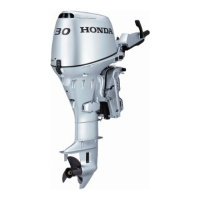




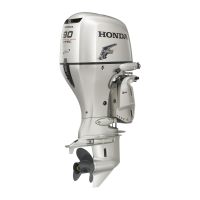
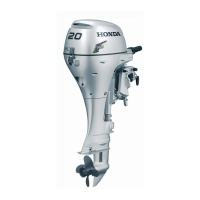
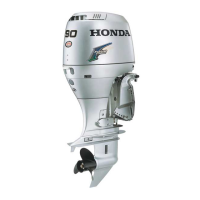
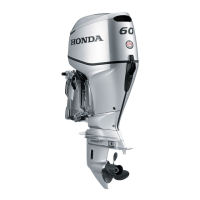
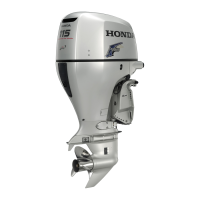

